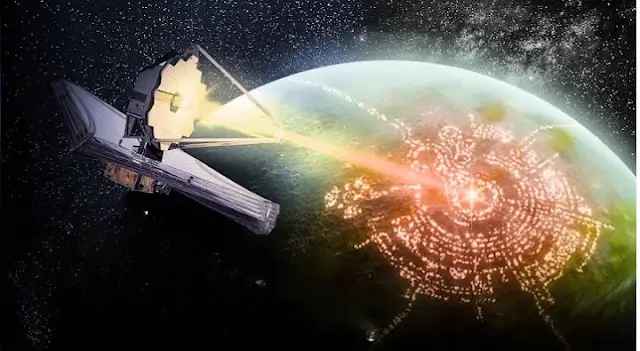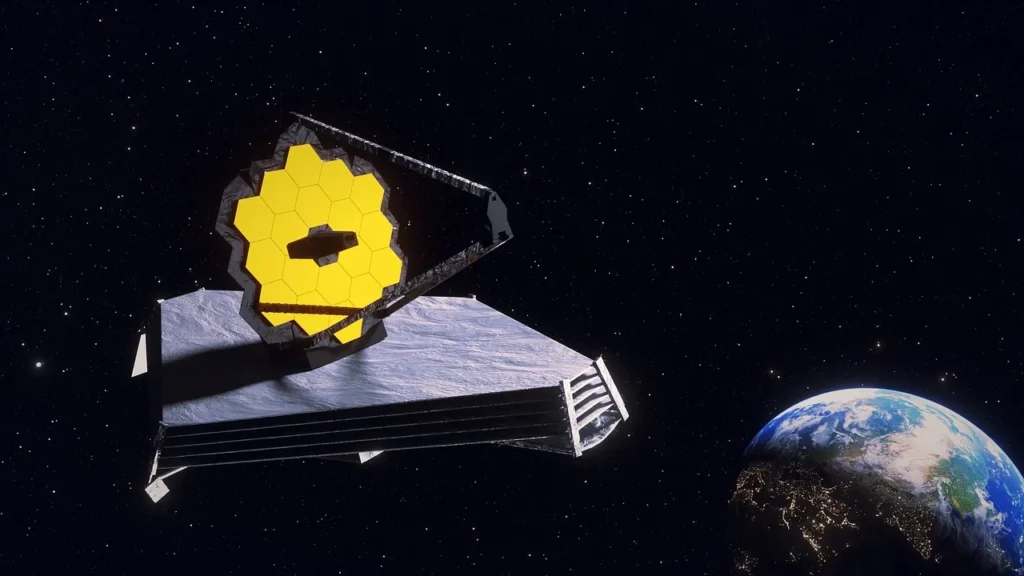
Introduction
The scientific community and the general public are abuzz with rumors that the James Webb Space Telescope (JWST) may have discovered signs of life on another world. If true, this would represent one of the most profound discoveries in the history of astronomy and could fundamentally change our understanding of life in the universe. Here’s what we know so far about these tantalizing rumors.
The James Webb Space Telescope
An Engineering Marvel
Launched on December 25, 2021, the JWST is the most powerful space telescope ever built. It was designed to peer deep into the universe, capturing light from the first galaxies that formed after the Big Bang and providing unprecedented detail of the atmospheres of exoplanets. Its advanced instruments and large primary mirror make it an ideal tool for searching for signs of life beyond Earth.
Mission Goals
One of the key objectives of the JWST is to study the atmospheres of exoplanets located in the habitable zones of their stars, where conditions might be right for liquid water—and potentially life. By analyzing the light filtered through these atmospheres, scientists can identify the chemical signatures of various molecules, including those that might indicate biological activity.

The Rumors
Possible Detection of Biosignatures
According to sources within the scientific community, the JWST may have detected biosignatures—chemical indicators of life—on an exoplanet. These biosignatures could include molecules like oxygen, methane, or even more complex organic compounds that are typically associated with biological processes on Earth.
Speculation and Excitement
While no official announcement has been made, the speculation has sparked excitement among scientists and enthusiasts alike. The presence of biosignatures does not guarantee the discovery of life, as non-biological processes can sometimes produce similar signals. However, the detection of multiple biosignatures together, in the right environmental context, could significantly bolster the case for extraterrestrial life.
The Potential Exoplanet
Candidate Planets
Several exoplanets have been identified as prime candidates for hosting life. Among them are planets in the TRAPPIST-1 system, which features seven Earth-sized planets, three of which lie within the star’s habitable zone. Another promising target is Proxima Centauri b, an Earth-sized planet orbiting the closest star to our solar system. It is currently unknown which specific exoplanet the rumors pertain to.
Analyzing the Data
The JWST’s instruments, such as the Near Infrared Spectrograph (NIRSpec) and the Mid-Infrared Instrument (MIRI), are capable of detecting and analyzing the spectra of planetary atmospheres. By studying these spectra, scientists can identify the chemical composition and assess the potential for biological processes.
Implications of the Discovery
Scientific Revolution
If the JWST has indeed detected signs of life, it would revolutionize our understanding of biology, chemistry, and the conditions necessary for life. It would suggest that life is not unique to Earth and that the universe may be teeming with life forms waiting to be discovered.
Philosophical and Cultural Impact
The discovery of extraterrestrial life would have profound philosophical and cultural implications. It would challenge our place in the cosmos and prompt a re-evaluation of our understanding of life’s origins and its potential diversity. Such a discovery could also inspire a renewed interest in space exploration and a deeper appreciation for the fragility of our own planet.
Awaiting Confirmation
Official Announcement
The scientific community is eagerly awaiting an official announcement from NASA and the JWST team. Confirmation of the discovery will require rigorous analysis and peer-reviewed studies to ensure the accuracy and reliability of the findings.
Next Steps
If the detection of biosignatures is confirmed, the next steps would include further observations and missions to understand the nature of the potential life forms. This might involve more detailed studies of the exoplanet’s environment, climate, and geological activity to build a comprehensive picture of its habitability.
Conclusion
The strong rumors about the discovery of life on another world by the James Webb Space Telescope have captivated the imagination of people around the globe. While we await official confirmation, the possibility that we may not be alone in the universe is a thrilling prospect that could usher in a new era of scientific discovery and exploration. Whether or not these rumors hold true, the JWST continues to push the boundaries of our knowledge and expand our understanding of the cosmos.
